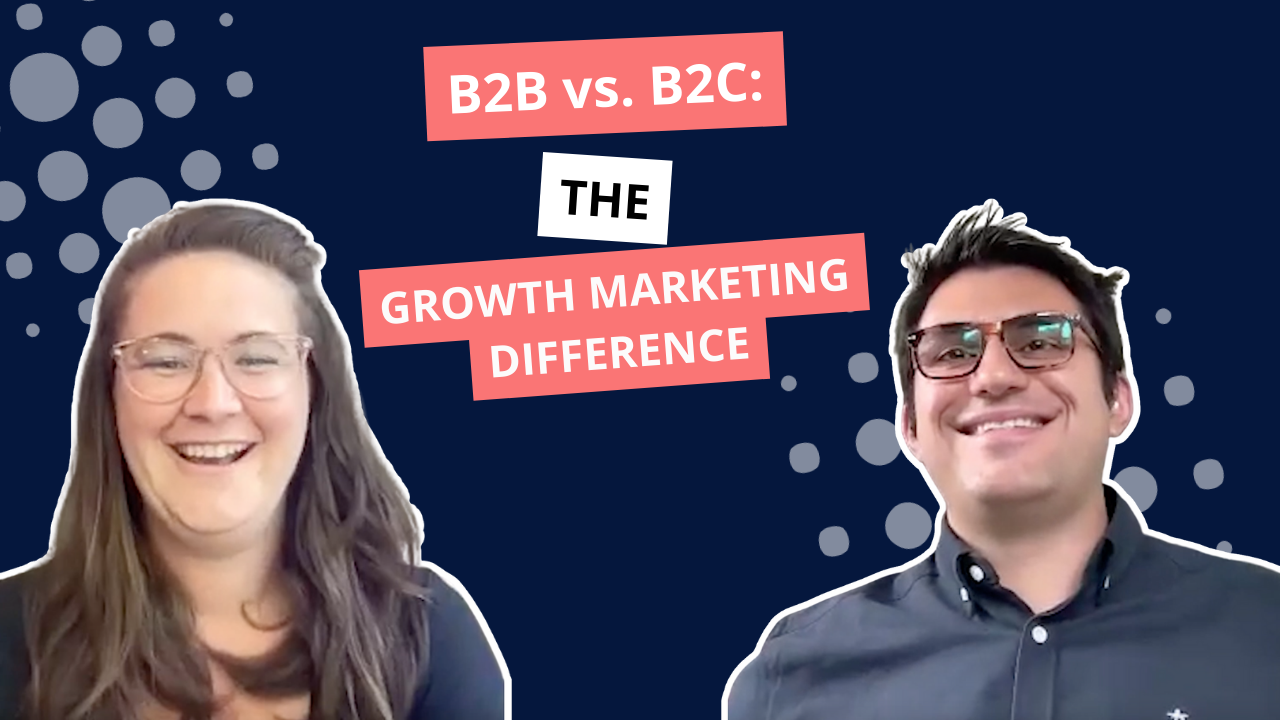The business landscape across industries has only become more competitive in recent years.
For B2B organizations, from start-ups to Fortune 500 companies, old-fashioned marketing isn’t enough anymore. Raising brand awareness is taking a back seat to a more tactical, strategic marketing methodology.
That strategic methodology is also known as growth marketing, and it’s a data-heavy, strategy-backed way of marketing designed to impact the bottom line.
But not everyone knows what growth marketing is, how it differs from traditional digital marketing, or how to execute growth marketing activities properly
Read on to learn the essential tenants of growth marketing for B2B and how it can help you prove marketing ROI and increase profitability.
.webp?width=500&height=500&name=growth%20marketing%20(1).webp)
What is Growth Marketing?
While traditional digital marketing primarily focuses on raising brand awareness at the top of the funnel, growth marketing takes full responsibility for the entire customer lifecycle and never seeks to gain exposure for exposure’s sake. Growth marketers take a data-driven, analytical approach to all their marketing efforts and seek to align marketing actions with strategic goals and KPIs.
Growth marketing is about driving revenue at scale, which is why it’s sometimes referred to as revenue marketing. To get a complete picture of the basics of revenue marketing, including strategy and the role of the C-suite, check out our Ultimate Guide to Revenue Marketing.
This method especially has implications for B2B companies, which can’t always rely on fun creatives, playful copy, and ultra-personalized campaigns to attract leads the same way the B2C can. B2B needs to grow revenue in a consistent way that flawlessly meshes strategy and execution, and growth marketing is how they can do that.
4 Hallmarks of Growth Marketing
Growth marketing has several defining characteristics, and four of its essential hallmarks are as follows:
1. The Funnel, the Whole Funnel, and Nothing But The Funnel
Traditional digital marketing is all about exposure and brand awareness. In that way, marketing can be compared to advertising. Marketers and advertisers focus on the very top of the marketing funnel, the awareness stage, and do their best to put out materials that will increase their exposure and draw prospects in. Once a lead enters the pipeline, traditional marketers move on and don’t see that lead through their journey.
Growth marketing takes that several steps further by focusing on everything from the top of the marketing funnel all the way to the bottom of the sales funnel. Growth marketers often take a multi-channel approach to raise awareness, drive lead generation, engage current customers, re-engage closed lost deals, and more. They care about closing deals...and everything after that, too.
Meanwhile, behind the scenes, a good growth marketing agency will implement automation to make the journey through the funnel and the pass from marketing to sales a truly seamless experience. The entire customer journey falls under the jurisdiction of growth marketing.
2. Iterate, Iterate, Iterate
Growth marketers constantly challenge themselves to iterate and experiment; a campaign is never truly over in growth marketing. This can be as simple as A/B testing email subject lines and copy but usually extends to implementing a multi-channel approach.
With a multi- or omnichannel approach, growth marketers will cast a wide net and run multiple efforts, including (but not limited to) emails, paid social, paid search, SEO, automation, and more. They’ll carefully monitor their efforts for effectiveness by consistently checking on data (we’ll get to that), then tweak, revamp, overhaul, or replace their efforts with something new based on their findings. By ensuring that only effective campaigns are running, growth marketers enable maximum revenue growth and make intentional, strategic use of their budget.
3. Data is a Growth Marketer’s Best Friend
Like any good detective or bloodhound, growth marketers are constantly tracking. Every step of the way, they’re focused on data, numbers, and analytics. While many marketers value a good dashboard or graph, growth marketers actively prioritize data. They track what’s working and what isn’t in their ads, websites, automation efforts, and more on a daily basis and are very agile in making changes to their efforts based on what they’re seeing.
By focusing so heavily on numbers, growth marketers can tell when revenue growth isn’t up to par or when a budget isn’t being used to its full potential and then adjust accordingly and expediently. Essentially, growth marketers optimize every dollar to generate many more.
4. ROI is King
The last hallmark of growth marketing goes hand-in-hand with the emphasis on metrics. Growth marketing always focuses on return on investment (ROI) and showcasing marketing’s direct contribution to revenue.
For more insight on how growth marketers contribute to revenue and obtain a high ROI, check out the blog post How Marketers Can Show Their Contribution to Revenue.
What is Growth Marketing? The Conclusion
Growth marketing is a unique approach to an age-old industry. Above all else, growth marketing stands out by ensuring that all those eyeballs, impressions, clicks, and other lead indicator marketing activities are transferred into bottom line impact and measurable growth.
Want to Know More?
Looking for a full-stack growth marketing and demand generation agency that’s always focused on revenue? Get in touch with our best-in-class B2B marketing agency today!







